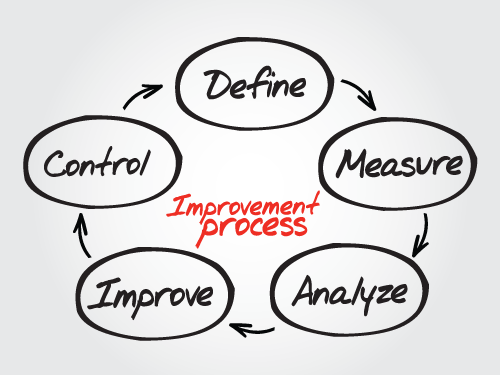A continuous improvement process is how companies consistently reduce their costs by finding opportunities that will save time, materials and labor. In order to find the hidden opportunities in the sheet metal production process, each process must be broken down into subsets and then measured.
Measuring the Data:
The best way to measure a production process is to use statistical data. Measured over a specific period of time, this data can determine where the hidden opportunities might be. Today’s modern metal cutting and bending machines are capable of communicating production data directly to software that will segment the data into these subsets for analysis. From the time a metal cutting or metal bending machine is operational, it begins to produce production data. Each system message or error message is effectively a subset of that machine’s processes along with the production data.
Finding the Cause:
For example a machine message stating “waiting for material,” indicates that the machine is expecting raw material to process. In the case of an automated system, the material tower system must present the material to the loading system. Waiting for material can be an expected message for the first sheet of the day but thereafter, when this message is analyzed for frequency over time, a statistical picture will emerge. In the case of an automated system has the tower run out of materials? Is the tower not being loaded with the proper materials in a timely manner? What about analyzing the same message over a specific shift of operations? Does the same system message appear on each shift or does it only exist on one shift? In the case of not using an automated system is the operator unloading the cut materials and loading a new sheet before the machine calls for it? Identifying the problem is the first step, finding the cause of the problem is the second, and then finding a solution creates the opportunity for improvement. This can only happen if you measure the process and you have the data to identify where the opportunities for improvement are.
Finding a Solution:
Even if a process is not being data logged, such as is the case with offline programming, there still exists the possibility to measure the performance of a process. Tracking programming time for each job is only one component of the measure. How often do machines sit idle waiting for programs? This can also be identified directly with the data coming from each machine. Perhaps after analyzing this, the conclusion is reached that you do not have enough programmers or that the programmers are not receiving timely information from the order entry system? Again, only a measure and subsequent analysis of the data can determine this. Providing the data to management to support new hiring makes the justification process transparent.
Action based on Facts:
A Continuous improvement process requires measures and the data to support those measures. It is only with data that a true unbiased measure of performance can exist and how companies can find hidden opportunities to improve their process, reduce costs and improve their bottom line profits.
By Frank Arteaga, Head of Product Marketing, NAFTA Region
Bystronic Inc., Elgin, IL – Voice.bystronic@bystronic.com

